
JOURNAL OF INORGANIC MATERIALS
Scope & Guideline
Cultivating Insights for a Sustainable Future
Introduction
Aims and Scopes
- Synthesis and Characterization of Inorganic Materials:
Research on various methods for synthesizing inorganic materials, including novel techniques and modifications, as well as detailed characterization studies to understand their structural, thermal, and optical properties. - Applications in Energy Storage and Conversion:
Exploration of inorganic materials in energy-related applications such as batteries, fuel cells, and thermoelectric devices, focusing on enhancing performance and efficiency. - Environmental Applications:
Studies on the use of inorganic materials for environmental remediation, catalysis, and pollution control, highlighting their potential in addressing global environmental challenges. - Advanced Functional Ceramics:
Development and investigation of functional ceramics with specific properties for applications in electronics, optics, and biomedicine, emphasizing their design and performance. - Nanomaterials and Composites:
Research on the synthesis and application of nanostructured materials and composites, examining their unique properties and potential applications in various technologies. - Computational Materials Science:
Utilization of computational methods to predict material properties and behaviors, aiding in the design of new materials and understanding their mechanisms.
Trending and Emerging
- High-Entropy Materials:
Research on high-entropy ceramics and alloys has surged, driven by their unique properties and potential applications in extreme environments, including aerospace and nuclear applications. - MXenes and 2D Materials:
The exploration of MXenes and other two-dimensional materials is rapidly growing, particularly for their applications in energy storage, catalysis, and flexible electronics. - Smart and Functional Coatings:
There is an increasing trend in the development of advanced coatings with multifunctional properties, such as self-cleaning, anti-corrosion, and electrochromic functionalities. - Biocompatible Inorganic Materials:
Research on biocompatible inorganic materials for medical applications, particularly in drug delivery systems and tissue engineering, is gaining momentum as the field of biomedical materials expands. - Sustainable and Green Materials:
A notable shift towards sustainable practices in the synthesis and application of inorganic materials, including the use of eco-friendly processes and materials that contribute to environmental sustainability. - Advanced Characterization Techniques:
The rise of sophisticated characterization techniques, such as in-situ methods and advanced imaging, is enhancing the understanding of material properties and behaviors at the nanoscale.
Declining or Waning
- Traditional Inorganic Synthesis Techniques:
There has been a noticeable decline in publications centered around conventional methods of inorganic synthesis, as researchers increasingly seek innovative and efficient approaches. - Basic Theoretical Studies:
Research focusing solely on theoretical aspects of inorganic materials without practical applications is becoming less frequent, as there is a growing emphasis on applied research and real-world applications. - Low-Temperature Processing Techniques:
The interest in low-temperature synthesis methods has waned, with a shift towards high-temperature and advanced processing techniques that yield materials with superior properties.
Similar Journals

RUSSIAN JOURNAL OF INORGANIC CHEMISTRY
Connecting Theory and Application in Inorganic ChemistryThe Russian Journal of Inorganic Chemistry is a distinguished publication that delves into the fundamental and applied aspects of inorganic chemistry. Published by MAIK Nauka/Interperiodica/Springer, this journal has established itself as a vital resource for researchers, professionals, and students alike, contributing significantly to the fields of Inorganic Chemistry, Materials Science, and Physical and Theoretical Chemistry. With an ISSN of 0036-0236 and an E-ISSN of 1531-8613, the journal is indexed for easy access and citation. Though the journal currently operates under a subscription model, its commitment to disseminating high-quality research and fostering scientific discourse remains steadfast. The journal has been maintaining a consistent record since its inception, and its positioning in the Q3 quartile across various chemistry categories in 2023 underscores its relevance in the academic community. As it continues through its converged years from 1996 to 2024, the Russian Journal of Inorganic Chemistry plays a pivotal role in enhancing the understanding and advancement of inorganic chemistry, making it an indispensable tool for anyone engaged in this dynamic field.
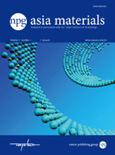
NPG Asia Materials
Navigating the Future of Materials with Expert PerspectivesNPG Asia Materials, a premier journal published by NATURE PORTFOLIO, stands at the forefront of research in the fields of condensed matter physics, materials science, and modeling and simulation. With an impressive Impact Factor gracing its Q1 rankings in 2023, this open-access journal, established in 2012, offers a vital platform for disseminating high-quality research articles, reviews, and perspectives that advance the understanding of material properties and innovative applications. Based in the United States and catering to a global audience, NPG Asia Materials features cutting-edge contributions that not only enhance academic scholarship but also provoke discussions relevant to both industry and academia. Researchers, professionals, and students are invited to explore its extensive archive of work, covering insights from 2009 to 2024, in a bid to stay abreast of the latest developments in these rapidly evolving scientific domains.
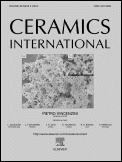
Ceramics International
Fostering collaboration and innovation in ceramics.Ceramics International is a premier journal published by ELSEVIER SCI LTD, focusing on advancing the field of materials science with a specific emphasis on ceramics and composites. With an impressive impact factor and a top-tier standing in several critical categories, including Q1 rankings in Ceramics and Composites, Electronic, Optical and Magnetic Materials, and Materials Chemistry, this journal serves as a crucial resource for researchers and professionals alike. Established in 1981, it has consistently showcased cutting-edge research in various domains, including surfaces, coatings, and process chemistry technologies, making it invaluable for those advancing theoretical and practical knowledge in these areas. While access is through subscription, the journal’s rich content, profound insights, and rigorous peer-review process ensure high-quality articles that contribute meaningfully to the scientific community. By fostering innovation and collaboration through rigorous research, Ceramics International stands out as an authoritative source for those dedicated to the evolution of materials science.
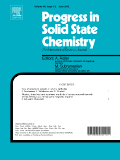
PROGRESS IN SOLID STATE CHEMISTRY
Connecting Theory and Practice in Materials SciencePROGRESS IN SOLID STATE CHEMISTRY, published by PERGAMON-ELSEVIER SCIENCE LTD, serves as a pivotal platform for disseminating cutting-edge research and advancements in the field of solid state chemistry. With an impressive impact factor and a respected status, this journal consistently ranks in the Q1 category across multiple disciplines, including Condensed Matter Physics, Materials Science, and Physical and Theoretical Chemistry. Following a rigorous peer-review process, it features articles that explore theoretical frameworks and experimental findings, thereby fostering innovation and collaboration among researchers and professionals. Although it does not adopt an open access model, its substantial reach and high Scopus rankings—19th in Condensed Matter Physics, 14th in Physical and Theoretical Chemistry, and 48th in General Materials Science—underscore its influence in shaping the future of materials research. Established in 1964, the journal continues to contribute significantly to the academic community, bridging the gap between theory and practical application in solid state materials.
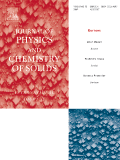
JOURNAL OF PHYSICS AND CHEMISTRY OF SOLIDS
Advancing the Frontiers of Solid-State ResearchJOURNAL OF PHYSICS AND CHEMISTRY OF SOLIDS, published by Pergamon-Elsevier Science Ltd, is a distinguished international journal that has been at the forefront of disseminating cutting-edge research in the fields of physics, chemistry, and materials science since its inception in 1956. This journal, which is recognized for its high impact in the Q2 category across multiple subjects—including Chemistry (miscellaneous), Condensed Matter Physics, and Materials Science—serves as a vital platform for researchers, professionals, and students to engage with significant advances in solid-state physics and chemistry. With Scopus rankings placing it in the top 15% of its field across various domains, the journal plays a crucial role in shaping the scientific dialogue surrounding materials properties, synthesis, and applications. Although it does not currently offer open access options, the presented research is widely recognized for its quality and relevance, ensuring that published works contribute meaningfully to ongoing scholarly discussions.

BULLETIN OF MATERIALS SCIENCE
Unveiling Breakthroughs in Material DevelopmentBulletin of Materials Science, published by the Indian Academy of Sciences, is a distinguished journal that has been contributing to the field of materials science since its inception in 1979. With an ISSN of 0250-4707 and E-ISSN 0973-7669, it provides a platform for researchers to share groundbreaking studies and advancements in the mechanics of materials and general materials science. As of 2023, the journal holds a respectable Q3 ranking in both the Materials Science (miscellaneous) and Mechanics of Materials categories, highlighting its competitive position in the academic landscape. Although the journal currently does not operate under an open access model, it remains a vital resource for professionals and students keen on exploring innovative material developments and methodologies. With a commitment to promoting high-quality research, the Bulletin of Materials Science features rigorous peer-review processes, making it an essential reference for anyone engaged in the materials science domain.
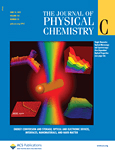
Journal of Physical Chemistry C
Unraveling the mysteries of nanoscience and beyond.The Journal of Physical Chemistry C, published by the American Chemical Society, stands as a pivotal resource in the realm of materials science and physical chemistry. With an impact factor reflecting its esteemed reputation, this journal showcases high-quality research spanning topics such as electronic, optical, and magnetic materials, as well as nanoscience and nanotechnology. Hailing from the United States, it operates without an open access model, yet its contributions are critical for advancing our understanding of surfaces, coatings, and films. Notably, the journal is classified in Quartile 1 (Q1) for several categories, underscoring its prominence in Physical and Theoretical Chemistry and related fields. Researchers, professionals, and students alike will find value in the comprehensive discussions and innovative research trends presented. The scholarly articles published from 2007 to 2024 not only drive forward scientific inquiry but also inform practical applications in various industries, making this journal an essential tool for anyone committed to excellence in the sciences.

Journal of Inorganic and Organometallic Polymers and Materials
Connecting Ideas in Inorganic and Organometallic PolymersThe Journal of Inorganic and Organometallic Polymers and Materials, published by SPRINGER, is a premier academic journal dedicated to advancing the field of materials science, particularly in the domains of inorganic and organometallic polymers. Established in 1996, this journal has successfully converged multiple years of research, reflecting the dynamic evolution of the field through to 2024. With an impressive Scopus Rank placing it in the top 81st percentile in both Materials Chemistry and Polymers and Plastics, it is recognized for its significant contributions and innovations. The journal is classified in the prestigious Q2 Category, indicating its influence and relevance among leading publications. While it operates under a subscription model, the journal is committed to disseminating cutting-edge research, providing insights that empower researchers, professionals, and students to push the boundaries of materials chemistry and polymer science. Its focus on high-quality, peer-reviewed articles ensures that readers are equipped with the latest findings and methodologies that drive this exciting and rapidly evolving field.
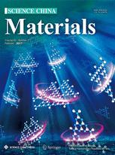
Science China-Materials
Exploring the Future of Materials Engineering.Science China-Materials is an esteemed peer-reviewed journal dedicated to advancing the field of materials science, published by SCIENCE PRESS. With a strong focus on innovative research and applications, this journal provides an essential platform for disseminating groundbreaking findings in materials development, characterization, and engineering. Since its inception, Science China-Materials has achieved an impressive Q1 ranking in the Materials Science (miscellaneous) category, reflecting its commitment to quality and the impact of its publications, as indicated by its 86th percentile ranking in Scopus. The journal is set to converge its contributions from 2016 to 2024, making it a vital resource for researchers and professionals interested in the latest advancements and trends in materials science. As an open access publication, it ensures that knowledge is freely available to a global audience, promoting collaboration and innovation across disciplines. The journal is headquartered in Beijing, China, and continues to attract high-quality submissions from leading experts in the field.

JOURNAL OF SOL-GEL SCIENCE AND TECHNOLOGY
Transforming Ideas into Innovative MaterialsJOURNAL OF SOL-GEL SCIENCE AND TECHNOLOGY, published by Springer, is a vital resource within the interdisciplinary fields of materials science and engineering, focusing on innovative research related to sol-gel processes and applications. With a rich publication history spanning from 1993, this journal enables the dissemination of cutting-edge findings in biomaterials, ceramics, and composites, ranking impressively across various categories—Q3 in Biomaterials and Q2 in several other materials-related fields. The journal's commitment to quality research is reflected in its Scopus rankings, particularly notable in the categories of Condensed Matter Physics and Materials Chemistry. Researchers and professionals leveraging the insights from this journal are supported through its comprehensive scope, which bridges theoretical foundations with practical applications, advancing knowledge and fostering collaboration among academics and industry leaders alike. As a non-open access journal, it is essential for subscribers and institutions to engage deeply with the latest advancements documented within its pages, underscoring the journal's role in shaping the future of sol-gel science and technology.